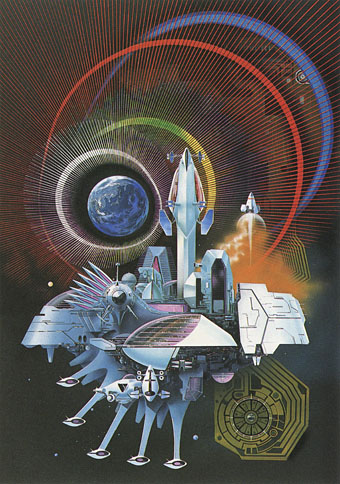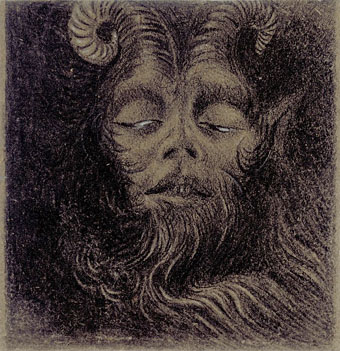
This one is partly intended as an aide-memoire for my future self should I need to recall where these particular illustrations are located. The Internet Archive has a good collection of specimen books created by type foundries, most of them American volumes although there are a few from Britain, France and Germany. The bulk of these books comprise typeface samples which I usually ignore, my interest being in the sections near the end which contain all manner of decorative detail: borders, ornaments and the small illustrations (“cuts”) that today would be classed as clip art. A few of these books have proved very useful when I’ve been working on a design that requires imitation of the decoration found in 19th-century print design (my cover for The Atropine Tree is a recent example) but I don’t always remember which book contains the elements I might want, hence this post.

Another of those cannibalistic advertising animals.
If you’re looking for antique print decoration then the catalogues published by the Johnson Type Foundry of Philadelphia (later MacKellar, Smiths & Jordan) are the ones to go for. I’ve copied or adapated ornaments and decorative details from this book on many occasions over the past ten years. The Internet Archive had a more substantial MSJ catalogue in their collection but it was a bad scan, one that was poor enough to receive some rare complaining comments from other Archive users. Happily another copy of the same book, The Eleventh Book of Specimens of Printing Types (1878), arrived there recently. The Johnson/MSJ catalogues are a much better source of decorative material than those created by their competitors, with a wider variety of combination ornaments (tiny details which could be pieced together to create unique borders or other peripheral decorations) and, in the eleventh volume, a larger stock of illustrations for advertising purposes. Before discovering these scanned catalogues I’d been relying on books from Dover and Pepin Press as source material for antique design. Pepin published a book/CD-ROM collection in 1999, Graphic Frames, which reproduces a number of the advertising cuts from the eleventh MSJ catalogue, including a couple of the ones shown here. The scans are seldom ideal in their raw state, I usually end up tracing the required design as a new version which I then convert to a vector shape. But they’re valuable in being the actual print decoration from the period, not modern reconstructions (or interpretations) of “Victorian” design.

The “Mortised Card Cuts” and “Mortised Comic Cuts” in the MSJ catalogue were comic illustrations intended for advertising purposes, although any “comic” quality is more likely to appear grotesque to our eyes. Shouting figures with very large, yawning mouths are popular in these kinds of drawings, as are dogs with singularly ugly faces. You can even see a forerunner of the “Kilroy” graffiti in the figure with a nose poking over the advert. I used a few of these faces for my Alice in Wonderland picture series in 2009: the top half of the smoking figure appears in “Advice from a Caterpillar” while other faces may be seen in the background of “Who Stole the Tarts?”.

Sondheim enthusiasts may recognise this particular figure as the origin of the razor-wielding character on the poster for the original Broadway run of Sweeney Todd – The Demon Barber of Fleet Street. Designer Frank Verlizzo (aka “Fraver”) shows how easily an old illustration can be made to slip from the comic to the sinister.
And from the comic to the plain bizarre… The past is often revealed to be a weirder place than you’d imagine once you start rummaging in its ephemera. The illustrations in most print catalogues are seldom this peculiar but until you go looking you don’t know what else might be out there.

Continue reading “MacKellar, Smiths & Jordan’s mortised card cuts”



